Summary of this tenth
In the first ten years, the light and temperature conditions in the western part of the northeastern region are conducive to the maturity of crops such as rice, spring corn and soybean in the first season. The rainy weather in the east is affected by the weather. Most of the soil in the northwestern part of the northwest and north China is suitable for the public, the sunshine is sufficient, and the temperature is relatively poor. The meteorological conditions are conducive to the full filling of the autumn harvest crops and the improvement of grain fullness and quality. The Huanghuai, Jianghuai and Jianghan periods are dominated by fine weather, which is conducive to the maturity of summer maize and rice in a season, and cotton cracking and bolling. In the south of the Yangtze River, due to strong cooling and precipitation, some areas have cold weather, but the duration is short, the temperature rises rapidly, and it has little effect on the late rice heading. The light and temperature in most parts of South China are well matched, which is beneficial to the growth and development of late rice. The rainy and ugly weather in most agricultural areas in the southwestern region is unfavorable for the ripe harvesting of autumn harvest crops.
Main weather characteristics of this week
Temperatures in most of the country's agricultural areas are close to or lower than normal. The temperature in most of Inner Mongolia, central and western North China, the northwestern part of the country, the central and western parts of the Yellow River and Huaihe River, the western part of the Yangtze River, the southern part of the Yangtze River, the southern part of the south of the Yangtze River, and most of the southwestern part of China are 1-2 °C lower. figure 1). Some parts of northeastern Inner Mongolia, northeastern and northeastern parts of the Northeast, southeastern Shanxi, north central Henan, northern Anhui, southeastern Zhejiang, central Jiangxi, western and central south Hunan, northeastern Guangxi, Sichuan Basin, eastern Yunnan, central Tibet and Precipitation in the southern part of the country is more than 50% to 2 times, and precipitation in most other areas is close to normal or less (Figure 2). Rainy days in the northeastern part of the Northeast, southwestern Jiangnan, northwestern and southwestern China are 5 to 9 days (Fig. 3), with less sunshine in the southwestern region and less than 20 hours in some areas (Fig. 4). 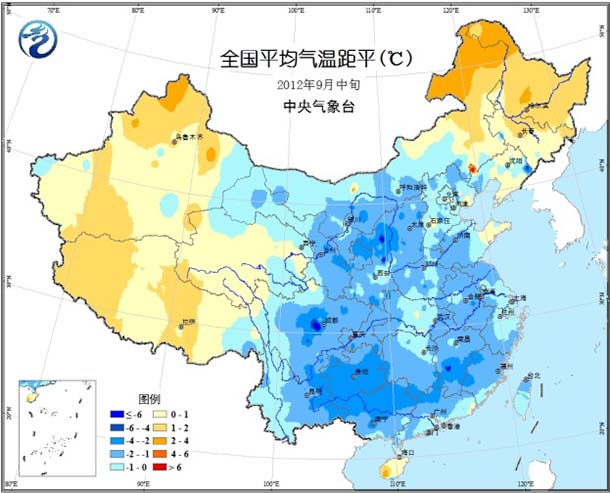
Figure 1 Average temperature anomaly in mid-September 2012 
Figure 2 Precipitation anomalies in mid-September 2012 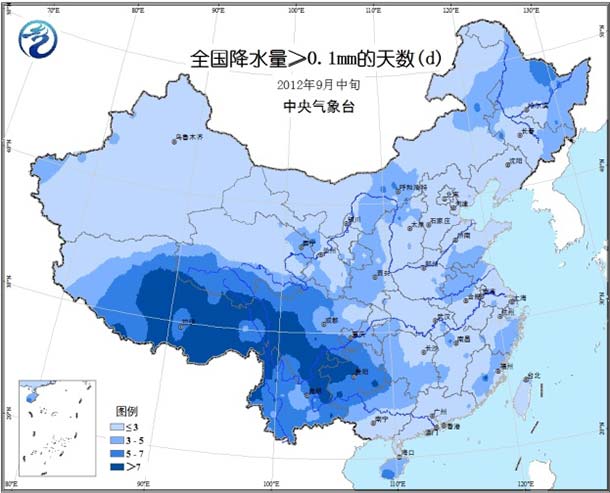
Figure 3 Precipitation days in mid-September 2012 
Figure 4 Sunshine hours in mid-September 2012
Current crop growth and development report
One season of rice: most of the northeastern region, most of the Yangtze River and Huaihe River, and Jianghan are in the stage of maturity to maturity; the eastern part of the Yangtze River and the eastern part of South China are in the stage of heading to milky maturity, and some areas are in maturity; most of the southwestern part is in the stage of maturity to maturity ( Figure 5).
Late rice: Most of the southern part of the Yangtze River is in the heading stage, and some enter the milky stage; most of southern China is in the tillering to booting stage (Figure 6). 
Figure 5 Rice development period in mid-September 2012 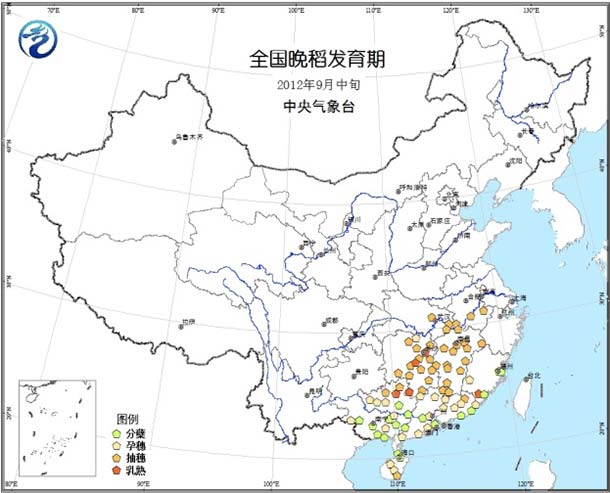
Figure 6 Late rice development in mid-September 2012
Spring wheat: Qinghai is in maturity, and harvested in Gansu and Inner Mongolia (Figure 7).
Spring corn: Most of the north is in the mature to mature stage; the southwest has been harvested (Figure 8).
Soybeans: Most of them are in the pod-forming period, and some parts of the northeast are in maturity (Figure 9).
Summer maize: North China, Huanghuai, and the northwestern region are in the mature stage of maturity; Xinjiang is in the milky stage; most of the southwest is in the mature harvest period (Figure 10).
Cotton: Most of the Xinjiang, Yellow River and Yangtze River basins are in the split bell and boll opening period (Figure 11).
Potatoes: Most of the northern part enters the acceptable period, and some areas are still in the tuber expansion period (Figure 12). 
Figure 7 Spring wheat development period in mid-September 2012 
Figure 8 Spring corn development period in mid-September 2012 
Figure 9 Soybean development period in mid-September 2012 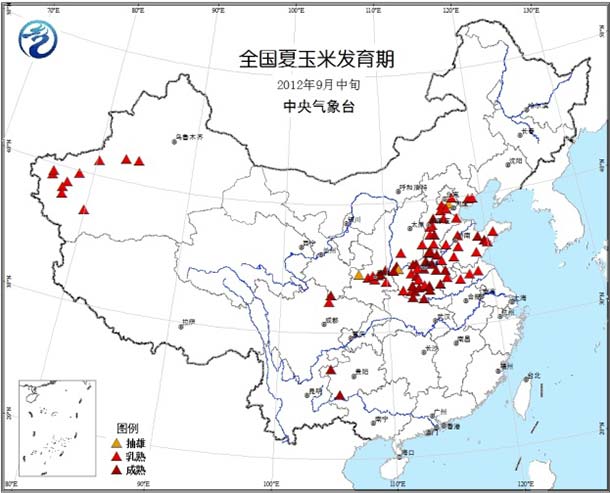
Figure 10 Summer corn development period in mid-September 2012 
Figure 11 Cotton development period in mid-September 2012 
Figure 12 Potato development period in mid-September 2012
Winter wheat: Northeastern Gansu, Shaanxi, and central Shanxi have successively entered the seedling emergence stage (Figure 13).
Rapeseed: rapeseed is in the eastern part of Gansu, southwestern Shaanxi, eastern part of southwestern China, and in the middle and lower reaches of the Yangtze River. The rapeseed is in the sowing period, and some areas have emerged (Fig. 14). 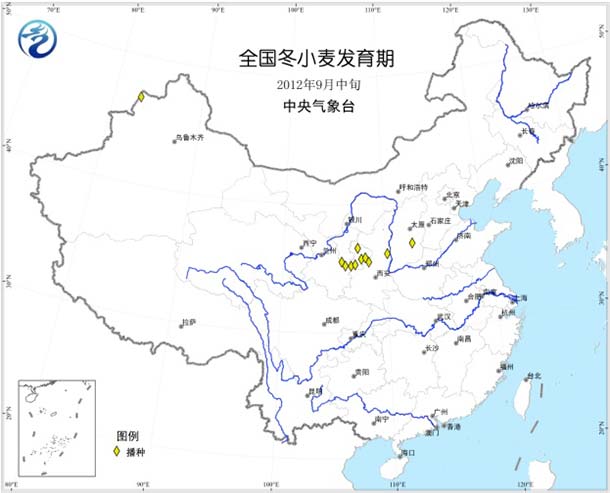
Figure 13 Winter wheat development period in mid-September 2012 
Figure 14: The development of rapeseed in mid-September 2012
Analysis of Agricultural Meteorological Conditions in Main Agricultural Areas
Northeast: The temperature in the western region is close to normal or high in the same period of the year, the light is sufficient, the soil moisture is basically suitable, and the meteorological conditions are conducive to the filling of mature crops such as rice, spring corn and soybean. Affected by the No. 16 super typhoon “Sanbaâ€, heavy rains occurred in the northeastern part of Jilin and eastern Heilongjiang, with heavy rains in the local area. The accumulated rainfall was 30-80 mm, and the northeastern part of Jilin was 90-109 mm. Heavy precipitation is unfavorable for crop filling ripening and harvesting of mature crops, and leads to excessive soil moisture in some parts of the eastern region and high stalk crops such as corn. By the end of the decade, crop development in parts of eastern Jilin and southern Liaoning was 5 to 9 days late, and the rest of the region was close to normal.
Northwest China and North China: The central and western regions of the northwestern region have sufficient light and heat, which is conducive to the full grain filling of autumn harvest crops such as corn, and cotton cracking and bolling. Most of the eastern part of the northwestern part of China and North China have appropriate conditions, sufficient sunshine and large temperature difference. The meteorological conditions are conducive to the full filling of autumn harvest crops and the improvement of grain fullness and quality. Frost occurs in the northwestern and central parts of Gansu, in the northwestern part of the mountain, and the frosty area is not in the main grain producing areas, which has little impact on agricultural production. By the end of the tenth, the crop development period in Xinjiang's agricultural areas was 5 to 15 days late, and the rest of the areas were close to normal.
Huanghuai, Jianghuai, Jianghan: The temperature is low, most of the time is mainly sunny weather, most of the farmland is suitable for the summer, and it is basically conducive to the maturity of summer corn and rice in a season, cotton cracking and bolling; but parts of the Jianghuai area are affected by low temperature and rain. The soil is too wet, which is not conducive to the maturity of one season rice and the yield of dryland crops. By the end of the decade, the crop development period in parts of Huanghuai West, Jianghuai North, Jianghan and other places was 4-7 days later, and the rest of the areas were close to normal.
Jiangnan and South China: The weather conditions during most of the period are conducive to the harvesting of late rice earing and longan, watermelon and other fruits. Affected by strong cooling and precipitation, 13-16 days, most of Hunan, western Jiangxi, southeastern Hubei, southern Anhui, mild cold weather, but the duration is short, the temperature rises quickly in the later period, the light is sufficient, and the late rice is raised. Has little effect.
Southwest: In most of the agricultural areas, the temperature is low, the rainy weather is more, the rainy days are 4 to 9 days, the sunshine is insufficient, the farmland soil is too wet, and it is unfavorable for the harvest of autumn crops and the cultivation of rapeseed. The precipitation weather is conducive to increasing the water storage capacity of farmland water resources such as Qiangtang and reservoir, laying a foundation for the later agricultural production water.
Main agricultural meteorological disasters
The main agricultural meteorological disasters in this period were heavy rain, cold damage, cold dew and pests and diseases (Figure 15).
Heavy rain: In the first ten years, heavy precipitation occurred in parts of Chongqing, Yunnan, Hunan and other places, causing some low-lying farmland to be flooded and destroyed, which is unfavorable for the late growth of autumn harvest crops and the harvesting of mature crops.
Cold damage: affected by cold air, since the 12th, Shanxi, Jianghuai, southern Hunan, northwestern Guangxi and other places have been chilled, corn, vegetables, fruits and other disasters, including Shanxi Taiyuan, Datong, Yangquan, Changzhi and other four cities and five counties The affected area was 36.4 thousand hectares and the direct economic loss was over 58 million yuan.
Cold dew: On the 13th to 16th, most of Hunan, western Jiangxi, southeastern Hubei, and southern Anhui were affected by cold air activities. Most of the areas experienced mild cold weather, but the temperature rose rapidly in the later period, which had a slight impact on the late rice heading and flowering. .
Pests and diseases: Due to the excessive precipitation since July, potato late blight is still in a state of gravity in parts of Gansu and other places. 
Figure 15 Major agricultural meteorological disasters in mid-September 2012
Prospects and recommendations for agricultural meteorological conditions in this decade
It is estimated that in the next 10 days, the rainfall in the eastern part of the northwestern region, the northeastern part of China, the northeastern region, the eastern part of Huanghuai, the south of the Yangtze River, the south of the Yangtze River, the south of the Yangtze River, and the southwestern region will be 10 to 40 mm, which is conducive to soil growth, storage and storage in the pond; 22- On the 26th, there were moderate to heavy rains in Guizhou, most of the south of the Yangtze River, and northern China. The northern part of Xinjiang, the eastern part of the northwestern part of China, the north of China, the northeast, the eastern part of Huanghuai, the western part of the south of the Yangtze River, the western and southern parts of South China, and the eastern part of the southwestern region were small to medium. Rain, in the eastern part of the northwestern region, central and northeastern Inner Mongolia, eastern part of the Sichuan Basin and other places have heavy rain, local heavy rain, is not conducive to harvesting and drying of mature crops; 27-29 days, affected by cold air, the central and eastern In the region, the temperature dropped by 4-8 °C. Some late-season areas in Jiangnan and South China may be exposed to cold dew. Before and after 29 days, some areas in central and eastern Inner Mongolia, Heilongjiang, Jilin and other places will have initial frost, which is not conducive to the full filling of autumn harvest crops. Suggest:
Northeast China and Inner Mongolia should strengthen the field management in the later stage. In the late development period of crop development, measures should be taken to promote crop early maturity and avoid the loss of yield caused by frost. In mature areas of crops, sunny weather, timely harvest and good meteorological conditions can be selected. Appropriate late harvest to increase grain fullness and increase yield.
Northwest China and North China agricultural areas should seize the time to harvest mature crops and ensure timely planting of winter wheat. In areas with late development and delayed maturity, measures should be taken to promote early maturity of crops so as not to affect normal ridges.
Most of the southwestern agricultural areas have entered the stage of preparation and cultivation of transplanted rapeseed. All localities should pay close attention to the weather changes, make full use of the rainfall gap, carry out loosening, dehumidification and disinfection work to ensure the smooth sowing of rapeseed; the areas where mature crops have not yet been harvested It is necessary to seize the fine weather of the precipitation gap, speed up the harvesting process, and dry in time to prevent mildew.
The late rice areas in the south of the Yangtze River and South China should be strengthened, and measures such as deep water or daily night irrigation and spraying of chemical insulation agents should be adopted to reduce the cold wind wind hazard; after the temperature rises, the root external fertilizer should be applied in time to restore the rice plant vigor and promote the grouting. Make sure the grain is full. In addition, all localities should strengthen the monitoring and control of rice pests and diseases to avoid losses caused by the spread of pests and diseases.
Wood Activated Carbon,Activated Carbon,Powder Activated Carbon
Waste Gas Treatment Activated Carbon,Activated Carbon Co., Ltd. , http://www.jsactivatedcarbon.com